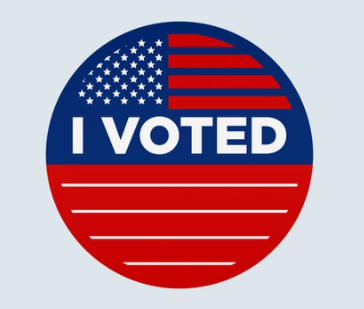Flawed two-party system polarizes country
4 min read
The two-party system in the U.S. creates polarized opposition between Democrats and Republicans. Visuals / Unsplash
by MASON GODEK
Staff Writer
The citizens of the United States are more divided than ever, and this issue can be attributed to the two-party system. This massive polarization only yields negative effects for our country, illustrating that the U.S. needs to leave the two-party system behind in order to fully represent all voices.
“Currently, our two-party system, which consists of the Democratic Party and Republican Party, exists in a context where party members—candidates, officeholders and sometimes voters—are highly polarized from one another,” said Dr. Rosalyn Cooperman, a political science professor at UMW. “This polarization makes it difficult to find common ground and consensus to move forward and work collaboratively on issues.”
This polarization can be seen everywhere on social media, as the ability to argue has been moved to our fingertips. Mironline uses the term “echo chambers” for those who seek to amplify their beliefs by interacting with other like-minded individuals.
As a result, individuals argue heavily online when encountering an opposing echo chamber. The Mironline article also said this leads to an increase in social anger and fuels negative partisanship.
According to theintercept.com, political identity has led to a team mentality that, in comparison to sports teams, divides the citizens of this country. This division has led to massive public distrust and creates hatred and violence between Americans over issues that can be compromised. Problems with our democracy then occur with this political polarization.
According to Brown University economist Jesse Shapiro, this polarization has been on the incline for several years. In 1978, when Americans were asked to rate their parties on a scale of 0 to 100, with 0 being no negative feelings toward the opposing party, the average American rated their own party 27 points higher than the other party. As of 2016, the average American now rates their party 45.9 points ahead of the other party.
Shapiro suggested this polarization is caused by parties starting to only represent certain ideologies rather than float around opposing party ideals in order to look for compromise.
In regard to the issue of polarization, Cooperman said, “Our system is structured in a way to produce winners and losers and make it harder for candidates and their parties to come together and work collaboratively to problem-solve. And, when parties are so polarized from one another, those incentives to collaborate and build consensus are even harder to come by.”
This lack of compromise from representatives reflects heavily on the people and is the reason behind distrust among the public. Evidence of this distrust can be observed in the way our representatives publicly instigate each other.
Democratic and Republican politicians have also stirred up distrust between citizens in order to seek political gain. This proved evident in the 2020 election, even in instances where policy was not being discussed. In fact, according to Pew Research Center, “supporters of Joe Biden and Donald Trump believe the differences between them are about more than just politics and policies.” Beyond politics and policies, these differences were based in core American values.
Politicians point out the individual shortcomings of opposing party politicians, whether they may be ethical or practical. There is no effort to compromise between the representatives. As a result, the public starts to feel as though their vote is less significant than promised by their chosen representative.
There will always be disagreement between individuals about policy. However, it is up to the elected representatives to compromise for both sides of the political spectrum.
Results of this political distrust lead to a fault in democracy, as there is less active political participation by individuals.
“Is the two party system in the U.S. flawed? Yes,” said Cooperman. “But it reflects the structure of how we elect people to represent us and how voters view the choices available to them.”
When asked how they felt about the two-party system, some UMW students agreed that it is flawed.
“I would say our two-party system is flawed because we are faced with two extreme sides of government,” said Mauricio Argote, a junior geography major. “The fact that our government works in two absolutes has shown us that we argue with each other on live TV and constantly on social media. With all this debate and arguing, no work is getting done to solve these issues.”
Nina Sacco, a junior historic preservation major, agreed that the two-party system is contributing to polarization.
“The two-party system creates a divide and lack of representation of all political parties. I feel like many Americans will only vote Democratic or Republican because they believe their vote is wasted on a third party. As a voter, I have previously agreed with the views of a third party but settled for a Democrat because I thought my vote would be more useful. The two-party system divides U.S. citizens, especially in recent elections, ” Sacco said.


